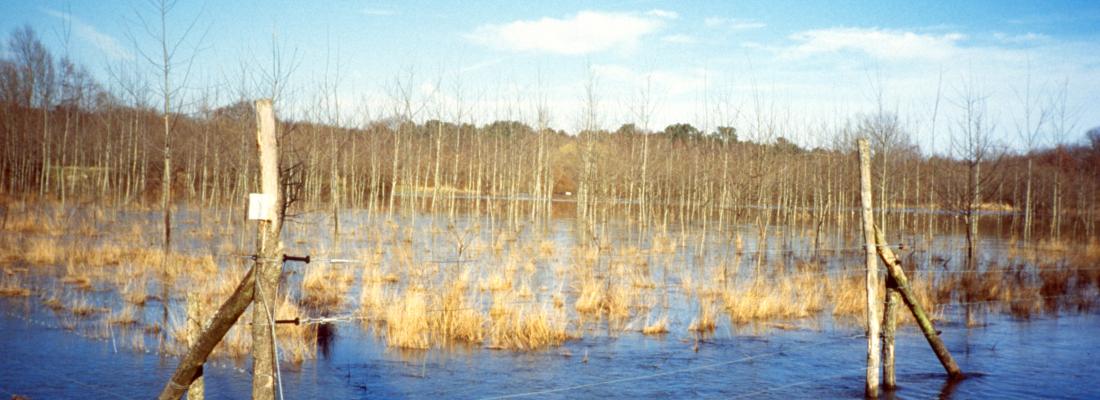Climate change and risks Reading time 5 min
Multi-hazard events: a focus for research and action
Published on 11 April 2023

Hazards of various kinds affect many regions, communities and ecosystems, whether they are natural – related to climate (drought, flooding, storms, avalanches, etc.) or health (epidemics) – technological (industrial accidents), geopolitical (armed conflict), or economic (price volatility) in character. The pressures exerted by global change (the climate emergency, weakened ecosystems, anthropisation and the intensive use of land and resources, economic and geopolitical instability, etc.) are causing hazardous events to increase in both frequency and size.
The nature of risk
Risk has several dimensions:
- a potentially dangerous event that may or may not happen and its characteristics (hazard);
- the exposure of a population or ecosystem to the hazard (exposure);
- the predictable impact of the hazard on the human, physical, economic and organisational features of systems and ecosystems (vulnerability).
It is possible for more than one hazard to occur at once, or different hazards can closely succeed one another. In such cases, their effects can combine in time or space to produce a multi-hazard event that often amplifies the environmental, social and economic damage they cause, with consequences that extend well beyond the areas immediately affected.
For example, repeated droughts or attacks by pests will increase a forest’s vulnerabilty to fire, and the resultant tree loss could lead to increased risk of landslips on steeper slopes, affecting areas beyond the forest itself and causing the loss of income and jobs in the forestry sector. Drought episodes can also sometimes reduce a different risk, such as that posed by pathogenic fungi, even as they increase the risk of fire.
Multi-hazard events, at the heart of major societal issues
Likewise, recent events have provided a stark reminder that natural hazards such as forest fires, or geopolitical threats such as the war in Ukraine, can have socio-economic consequences extending far beyond their initial areas of impact. We must also deal with emerging risks. Such risks, for example those associated with pandemics, are impossible to assess fully in their early stages and introduce fresh vulnerabilities, the obvious example being Covid-19. Despite the fact that a viral pandemic featured in a number of scenarios, many of the effects on our systems that are now visible could not be predicted.

The prevention of the emergence of zoonoses has, in the context of the Covid-19 pandemic, become a major global scientific challenge.
The representation, analysis and management of multiple risks and uncertainties affecting food systems, agroecosystems and populations have, since October 2022, become the core concern of XRisks, the latest metaprogramme to be launched by INRAE. Director, Pierre Dupraz, and Scientific Project Manager, Stéphane Couture, tell us more about the issues at stake and the approach that is being adopted.
Multi-hazard events, opening up a new front for science
Whether risks arise from biological, chemical, food-related, environmental, economic or social causes, whether events are simultaneous, have a single trigger, or occur in succession, it is essential to understand the complex interactions that occur. This is all the more important now that global change is increasing the frequency and intensity of certain hazards and affecting the vulnerability levels of the systems that are exposed. The study of multi-hazard events has opened up a new front in scientific research, especially in the fields of agriculture, food and the environment, all core areas of activity for INRAE. Their characterisation, like their management and prevention, requires a truly vast range of skills and professionals to be recruited to the major task of maintaining the performance and ensuring the sustainability of agriculture, human food and animal feeds, and of safeguarding precious ecosystems.
To meet this need, the XRisks metaprogramme has been designed to develop innovative, interdisciplinary and internationally open research, working at different spatial and temporal scales on potentially damaging processes and interactions. Stéphane Couture tells us that this work has been divided into four major themes – connections between different risk types, multi-hazard events and system vulnerabilities, multi-hazard events and transition, and perceptions, behaviours and visions.
‘The ambition of this metaprogramme is to establish and share a common, but not necessarily exclusive, analytical framework. The framework would be applicable to all situations, operating as a transferable structure that can be applied to agricultural, food and urban population systems’, comments Pierre Dupraz.
INRAE’s teams have been quick to take ownership of this area of research, helped by their own acknowledged scientific expertise in many of the disciplines with an interest in the issue, and by their formal academic partnerships with numerous teams whose research is relevant to the study of risks. Many projects are already up and running, with others in the pipeline.

A meta-analysis of 600 case studies published between 1966 and 2019 has confirmed that mixed forest stands are better able to resist attacks from most herbivorous insects than pure stands (monocultures), with an average reduction in damage of around 20%.
Safety risk analysis in food systems
The HOLiFOOD project (EU 2022-2026), in which INRAE is a partner, aims to improve the analysis of chemical and microbiological risks (whether emerging or established) to food safety. It adopts a wider and more holistic framework within which food systems can be studied, taking health (including nutrition), the environment in which foods are produced, and economic and societal aspects into consideration.
Ultimately, the XRisks Metaprogramme will provide a supportive working environment for the organisation of a scientific community, many of whose members are already active in tackling risk-related issues. It offers ample scope for the development of major initiatives by, for example, funding projects at a national scale, or serving as a springboard for still larger European or international projects where INRAE can take up a leadership position on multi-hazard topics in its areas of expertise.
The programme aims high, seeking to offer both valuable support for public policy and a broad range of practical applications – responding to populations’ safety needs, contributing to the long-term future of socio-environmental systems or the sustainability of socio-economic systems, answering questions on the process of transition, whether this been imposed by external factors (climate) or embarked on voluntarily (food, energy, agroecology) – that will enable us to progress towards systems with greater resilience and less vulnerability to hazards.
